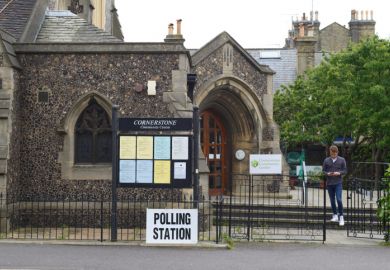Universities should be assessed on how many students from poorer families they send into professional jobs, rather than how many they admit, a former vice-chancellor has argued.
In a report for the thinktank CentreForum, Michael Brown, who led Liverpool John Moores University from 2000 to 2011, says existing measures of universities’ impact on social mobility focus solely on “inputs” – the number of students admitted from poorer backgrounds.
But they should instead concentrate on student “outcomes” achieved by universities, namely how many poorer students gain graduate employment soon after graduation.
“University recruitment alone is no indicator of having achieved social mobility in a sustainable or meaningful way,” writes Professor Brown in the report, titled Higher Education as a Tool of Social Mobility, published on 1 May.
Indeed, recruiting more students from poorer backgrounds could be a “perverse” and retrograde move if they do not get the support to achieve good degrees and professional jobs, given the debts they will incur, he says.
To encourage universities to improve their support for disadvantaged students in gaining professional employment, Professor Brown suggests a new Social Mobility Graduate Index, which could be used in league tables.
Using official student and employment data that already informs universities’ Key Information Sets, the index would reflect the destinations of university leavers six months after they graduate.
Those universities who sent a large number of poorer students into graduate-level jobs would be rewarded for their employability success and their contribution to improving social mobility.
In the proposed index featuring 153 institutions, the School of Pharmacy is top, followed by the University of St Mark and St John in Plymouth, Ravensbourne college in London, University Campus Suffolk and Edge Hill University.
Most of those institutions’ success reflects their orientation towards professions such as nursing and teaching, but other less specialised universities perform strongly, including the University of Huddersfield (sixth), Glyndwr University (joint seventh) and the University of Lincoln (joint ninth).
Only two Russell Group members feature in the top half of the index (Cardiff University at joint 59th and Newcastle University at joint 74th), with the group’s poor performance reflecting the high level of social privilege of its students, the report says. The University of Oxford finishes second to last (above only the University of Buckingham), just behind the University of St Andrews.
To incentivise universities to improve social mobility, Professor Brown suggests that student quotas are retained, with extra places awarded to universities with strong track records in helping poorer students into the professions.
But he notes that the government is to abolish student number controls from September 2015, which in essence means it “is relying entirely on the market to deliver the [social mobility] outcomes that it desires”.
With the government “relinquishing influence” over social mobility, students should have access to the index, which provides “timely and accurate performance information to allow [them] to make informed choices on the best institution to deliver the outcome they seek”, Professor Brown concludes.
Register to continue
Why register?
- Registration is free and only takes a moment
- Once registered, you can read 3 articles a month
- Sign up for our newsletter
Subscribe
Or subscribe for unlimited access to:
- Unlimited access to news, views, insights & reviews
- Digital editions
- Digital access to THE’s university and college rankings analysis
Already registered or a current subscriber? Login





